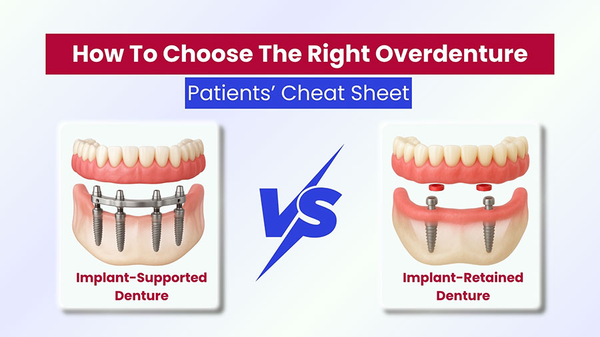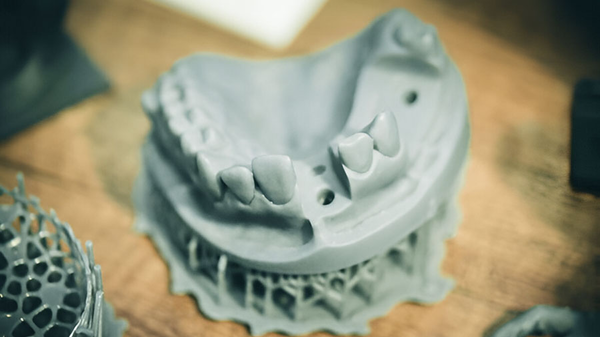The dental laboratory industry is evolving faster than ever. What was once defined by craftsmanship and manual precision has now entered a new era: one powered by digital design, automation, and data-driven production. At the heart of this transformation lies dental milling, the technology that’s reshaping how restorations are designed, manufactured, and delivered around the world.
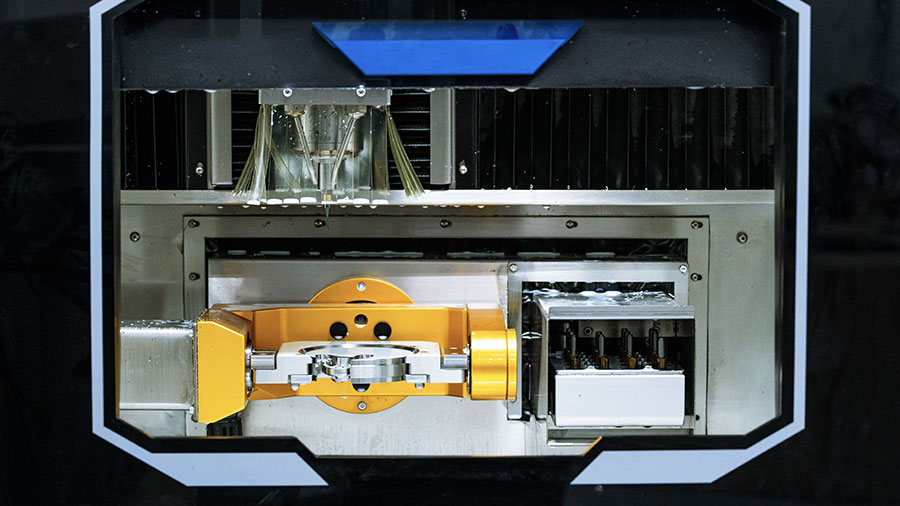
Table of contents [Show]
Valued at $345 million in 2025 and projected to grow steadily through 2032, the dental milling software market is becoming one of the strongest pillars of digital dentistry. For lab owners, this growth represents more than just technological progress; it signals a competitive shift where success depends on precision, scalability, and efficiency.
Modern dental milling systems now do far more than fabricate restorations. They integrate AI, CAD/CAM automation, and cloud-based data management to reduce turnaround times, cut remake rates, and maintain consistent quality at scale. As clinician expectations rise and technician shortages persist, digital adoption is no longer optional; it’s essential for long-term sustainability.
For U.S. dental labs, the question is no longer if they should embrace advanced milling technologies, but how fast they can adapt to stay ahead. This article explores the emerging trends in dental milling that are transforming production efficiency, redefining business strategies, and opening new opportunities for growth, both locally and globally. As the digital wave reshapes every aspect of dental production, understanding how dental milling evolved from manual craftsmanship to intelligent automation is key to anticipating where the industry is heading next.
The Rise of Smart Dental Milling Technology
The story of dental milling is one of evolution, from craftsmanship to computation. For decades, dental restorations were handcrafted through time-intensive casting and layering processes that demanded exceptional skill but limited scalability. As the demand for higher precision and faster turnaround grew, these manual methods reached their limit.
The introduction of CAD/CAM dental milling systems marked a turning point. What began as a tool for simplifying production has become the backbone of the modern digital lab. Through 3D scanning, digital modeling, and automated milling, technicians can now produce restorations with micron-level accuracy while reducing human error and material waste.
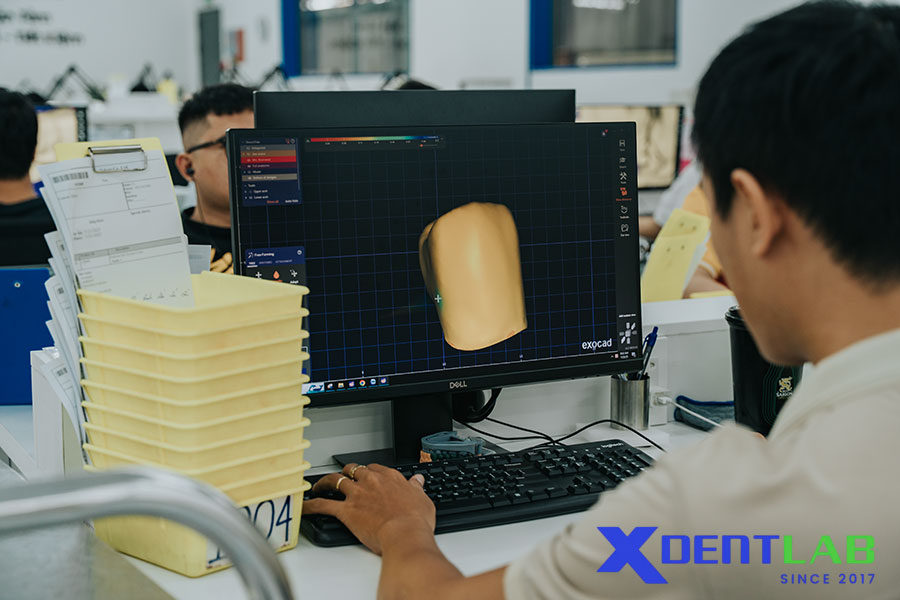
Today, three main types of dental milling machines define the landscape:
Five-Axis Milling Machines: Deliver the highest precision and versatility, allowing complex full-arch restorations and undercuts that were once impossible by hand.
Dry-Cutting Milling Machines: Eliminate the need for lubricants, reducing maintenance costs and enabling cleaner, more sustainable operations.
Hybrid Milling Machines: Combine the advantages of both precision and efficiency, ideal for high-volume labs seeking consistent quality and speed.
These systems are increasingly powered by AI-driven software that automates nesting, toolpath optimization, and error detection. According to industry data, such automation can reduce remake rates by up to 30 - 40%, significantly improving both efficiency and profitability.
For dental lab owners, smart dental milling is no longer just about technical capability: it’s a business strategy. Labs that invest in digital workflows gain control over production time, cost, and quality, creating the flexibility to handle complex implant cases and large-scale orders with confidence. With smart dental milling systems now forming the backbone of modern labs, the next stage of innovation lies in how software intelligence, connectivity, and automation continue to push boundaries.
Emerging Trends in Dental Milling Technology
The digital transformation of dental labs isn’t slowing down; it’s accelerating. The new generation of dental milling software is smarter, faster, and more connected than ever before. By combining automation, cloud collaboration, and immersive technologies, these systems help labs produce more precise restorations while reducing human labor and turnaround time. Below are the four key trends redefining how labs operate and compete in the global market.
AI-Powered Design Automation
Artificial intelligence (AI) is no longer a futuristic concept; it’s now embedded at the core of leading dental milling software. Platforms like Exocad DentalCAD, 3Shape Dental System are integrating AI-driven tools that automate margin line detection, tooth anatomy generation, and nesting optimization. These systems continuously learn from production data to enhance accuracy, material efficiency, and toolpath precision.
For dental labs, this means fewer remakes, faster case completion, and less reliance on technician experience for repetitive tasks. By integrating AI into their workflow, labs can scale output without increasing headcount, transforming efficiency into a competitive advantage.
Integration with 3D Printing
The integration between dental milling and 3D printing is reshaping production workflows. Modern software now supports both subtractive (milling) and additive (printing) manufacturing, allowing labs to choose the best method or combine both for each restoration type.
3D printers from brands like Formlabs, Carbon, or Asiga excel in rapid prototyping, and provisional restorations, while milling remains the gold standard for precision and durability. Together, they create a hybrid manufacturing ecosystem that minimizes material waste and shortens delivery times. This convergence helps labs stay agile, offering faster service without compromising accuracy: a major differentiator in today’s competitive market.
Cloud-Based Solutions and Data Management
Cloud technology is unlocking a new level of connectivity in dental milling workflows. Systems like 3Shape Communicate, and Medit Cloud enable labs to securely store, share, and update files in real time across multiple teams and locations.
Cloud integration also reduces the need for expensive local infrastructure and enables easy scalability as business grows. For labs managing multiple locations or global partnerships, cloud platforms provide centralized data management, version control, and live tracking, ensuring consistency and transparency from start to finish.
Virtual and Augmented Reality (VR/AR) Applications
The next frontier in dental milling software involves immersive visualization. Solutions such as Planmeca Romexis, and Exocad Smile Creator leverage VR and AR technologies to simulate restorations in 3D, improving communication and case predictability.
With VR, technicians can simulate full-arch restorations in 3D space, examining details like fit, occlusion, and esthetics before milling begins. AR tools, on the other hand, help clinicians and patients visualize treatment outcomes in real time, improving communication and satisfaction.
For labs, this means fewer adjustments, clearer design approvals, and a stronger partnership with dental offices. The result is a workflow that’s not only efficient but also highly interactive and patient-centered.
These advancements aren’t just redefining production processes; they’re transforming how labs operate, compete, and grow, creating measurable business advantages for those ready to adopt.
Business Impact Of Dental Milling for Lab Owners
The rapid evolution of dental milling technology isn’t just changing how restorations are made: it’s redefining how labs grow, compete, and profit. For today’s lab owners, embracing digital workflows delivers measurable business advantages across efficiency, scalability, and customer satisfaction.
Increased Productivity and Throughput
Digital dental milling systems enable labs to handle a greater volume of cases without expanding headcount. AI-powered design tools, automated nesting, and multi-axis milling allow simultaneous processing of multiple restorations. The result is faster turnaround times, fewer manual steps, and greater output capacity: all while maintaining consistent quality standards.
Higher Consistency, Lower Remake Rates
Unlike traditional fabrication, digital workflows minimize variability. Once a file is approved, it can be milled repeatedly with sub-micron precision. Studies show that digitally managed milling processes can cut remake rates by up to 30 - 40%, directly reducing wasted time and materials. For labs handling full-arch or implant-supported restorations, this reliability translates to stronger client trust and higher profitability.
Cost Optimization and Scalability
While the initial investment in dental milling equipment can be substantial, digital workflows quickly pay off through reduced labor hours, minimized errors, and faster delivery. Moreover, hybrid production partnerships with facilities like XDENT LAB allow U.S. labs to scale capacity without the overhead of full in-house production. This flexibility lets labs manage peak demand efficiently while preserving profit margins.
Improved Client Satisfaction and Loyalty
Faster turnaround, consistent results, and enhanced esthetics all contribute to stronger client relationships. Dental clinics increasingly prefer working with labs that can guarantee both precision and reliability. By adopting advanced dental milling software and hybrid workflows, labs position themselves as dependable partners that help clinicians deliver superior patient outcomes on time, every time.
Building a Future-Ready Business
Investing in digital dental milling isn’t just about keeping up with competitors: it’s about future-proofing your business. As the market continues to evolve toward AI-driven automation and integrated manufacturing ecosystems, early adopters will lead in efficiency, adaptability, and brand reputation.
Through collaboration with experienced global manufacturing partners like XDENT LAB, lab owners can confidently navigate this transformation, combining human expertise, advanced materials, and digital precision to achieve lasting growth.
Yet, while the advantages are undeniable, transitioning into a fully digital environment comes with its own set of challenges. Understanding these barriers is the first step toward building a truly future-ready operation.
Challenges in Digital Dental Milling Adoption
While the benefits of digital transformation are undeniable, many dental labs still face significant hurdles in fully adopting dental milling technologies. Understanding these challenges is key to building a realistic roadmap for modernization and long-term success.
High Initial Investment Costs
Transitioning from traditional methods to a digital CAD/CAM milling workflow requires substantial capital. From 5-axis milling machines to premium software licenses, the upfront cost can be daunting for small and mid-sized labs. However, forward-thinking labs treat this as a long-term investment, one that pays off through faster production, fewer remakes, and higher output capacity.
Specialized Training and Skill Gaps
Digital milling isn’t just about equipment; it demands a new skill set. Many labs struggle to upskill technicians in digital design, nesting, and maintenance. This learning curve can slow adoption and increase dependency on external training. Partnering with experienced digital labs or outsourcing parts of production can ease the transition.
Integration with Existing Equipment
Integrating new dental milling systems with older scanners, design software, or production tools can create compatibility issues. Inconsistent data formats or outdated hardware often lead to workflow inefficiencies. Choosing software with open architecture or collaborating with partners who already operate fully digital helps labs avoid these roadblocks.
Data Security and Workflow Management
As dental labs transition to cloud-based milling systems, data protection has become a cornerstone of modern operations. Every digital restoration involves confidential patient information and proprietary design files. Without strong encryption, controlled access, and consistent data management, labs risk not only technical disruptions but also reputational damage that can erode client trust.
For lab owners, investing in secure, cloud-based workflows is no longer optional; it’s a business imperative. By implementing clear data governance policies and partnering with technology providers that follow industry best practices, labs can safeguard both performance and privacy.
Strong data security doesn’t just protect information; it protects business continuity. In a competitive digital landscape, labs that prioritize cybersecurity earn greater client confidence, operate more efficiently, and position themselves as trusted, future-ready partners in the era of intelligent dental milling.
So, How to Overcome This?
Adopting digital dental milling technology isn’t just a technical shift: it’s a mindset change. While many lab owners recognize the benefits of digital workflows, the transition process can feel daunting. The good news is that modernization doesn’t have to happen all at once. With a structured approach and the right partners, any lab can evolve confidently into the digital era.
Start Small, Scale Smart
One of the most effective ways to manage digital transformation is to start with a single stage of the workflow such as CAD design or milling before expanding to full integration. This step-by-step approach allows teams to gain hands-on experience, minimize risk, and build internal expertise without disrupting existing operations. For example, a lab might begin by using digital milling software for crown design before moving into full-arch production or outsourcing large-scale milling to trusted partners.
Invest in Training and Upskilling
The biggest success factor in digital adoption isn’t the machine: it’s the people behind it. Continuous training helps technicians master digital nesting, toolpath management, and post-processing, ensuring that your lab delivers both speed and accuracy. Consider leveraging manufacturer training programs or collaborating with digital labs that already operate high-volume, fully automated systems.
Collaborate Through Hybrid Manufacturing
Hybrid manufacturing partnerships are becoming a cornerstone of modern dental production. By combining in-house design control with outsourced dental milling and finishing, labs can balance efficiency with scalability. Partnering with global facilities like XDENT LAB gives labs access to advanced milling capabilities, 100% FDA-approved materials, and experienced technicians without the burden of heavy investment or hiring. This hybrid model also allows for faster turnaround, reduced remake rates, and consistent quality across high-volume implant cases.
Conclusion
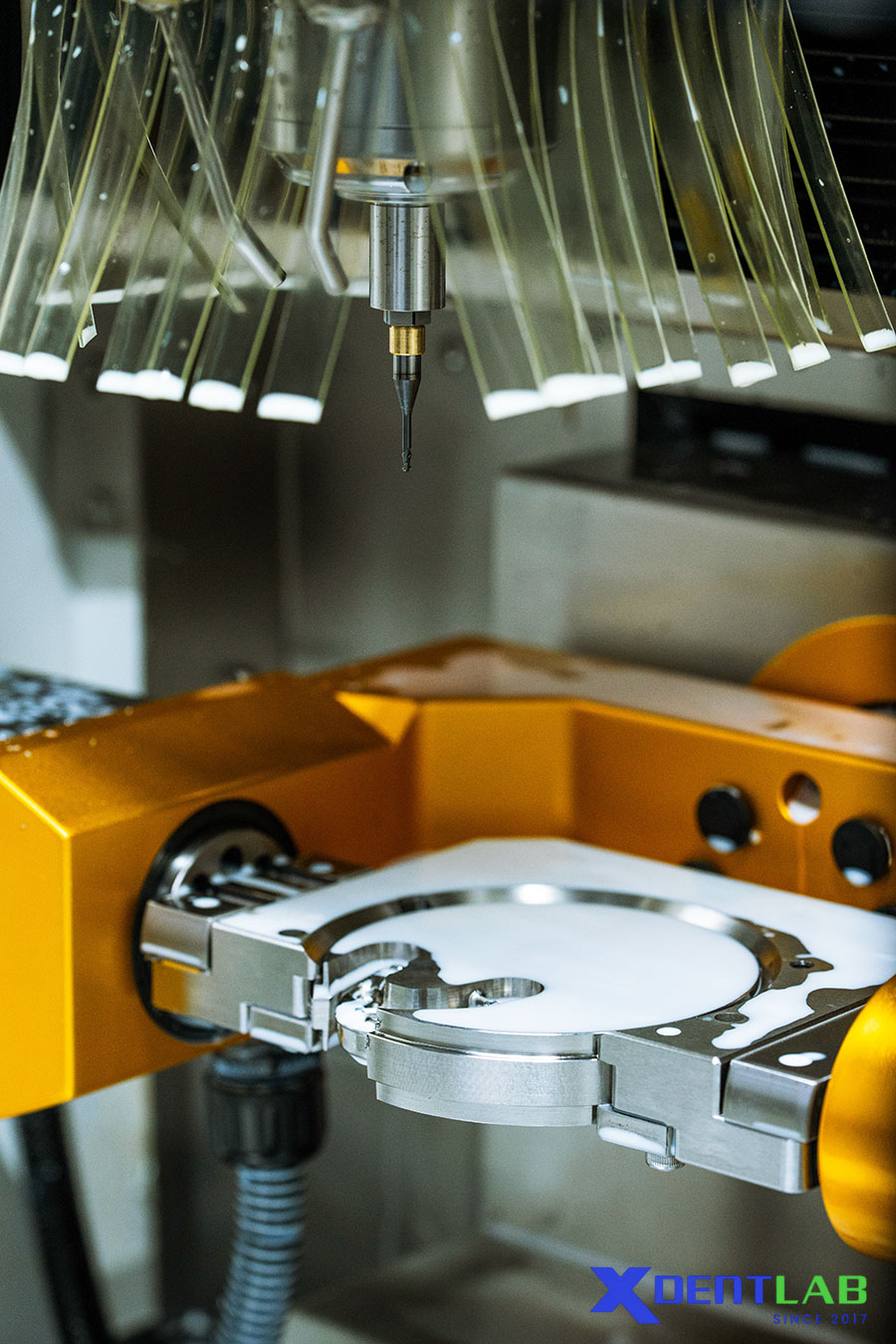
The digital era has transformed dental milling from a craft into a science. What once relied on the artistry of technicians now thrives on smart automation, AI integration, and seamless collaboration.
For lab owners, success today means more than keeping up with technology; it means using it strategically to scale operations, reduce costs, and deliver restorations with unmatched accuracy and consistency. As innovation continues, labs that embrace digital workflows, hybrid manufacturing, and AI-driven optimization will lead the next generation of dental excellence.
At XDENT LAB, we help labs modernize with confidence, offering global-scale lab-to-lab full-service solutions powered by advanced technology and 100% FDA-approved materials. From design to production, we empower you to deliver high-quality restorations faster, smarter, and more efficiently.
XDENT LAB is an expert in Lab-to-Lab Full Service from Vietnam, with the signature services of Removable & Implant, meeting U.S. market standards – approved by FDA & ISO. Founded in 2017, XDENT LAB has grown from local root to global reach, scaling with 2 factories and over 100 employees.. Our state-of-the-art technology, certified technicians, and commitment to compliance make us the trusted choice for dental practices looking to ensure quality and consistency in their products.
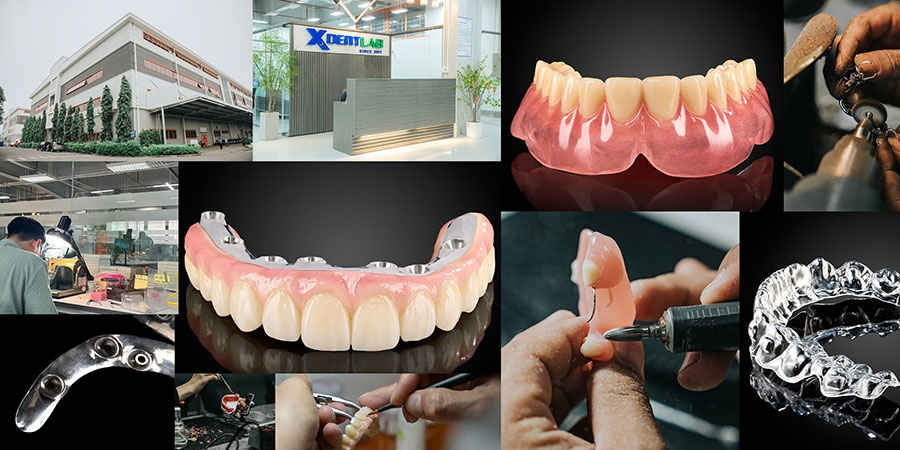
Our commitments are:
100% FDA-Approved Materials.
Large-Scale Manufacturing, high volume, remake rate < 1%.
2~3 days in lab (*digital file).
Your cost savings 30%.
Uninterrupted Manufacturing 365 days a year.
Contact us today to establish a strategy to reduce operating costs.
--------❃--------
Vietnam Dental Laboratory - XDENT LAB
🏢 Factory 1: 95/6 Tran Van Kieu Street, Binh Phu Ward, Ho Chi Minh City, Vietnam
🏢 Factory 2: Kizuna 3 Industrial Park, Can Giuoc Commune, Tay Ninh Province, Vietnam
☎ Hotline: 0919 796 718 📰 Get detailed pricing
Share this post:

